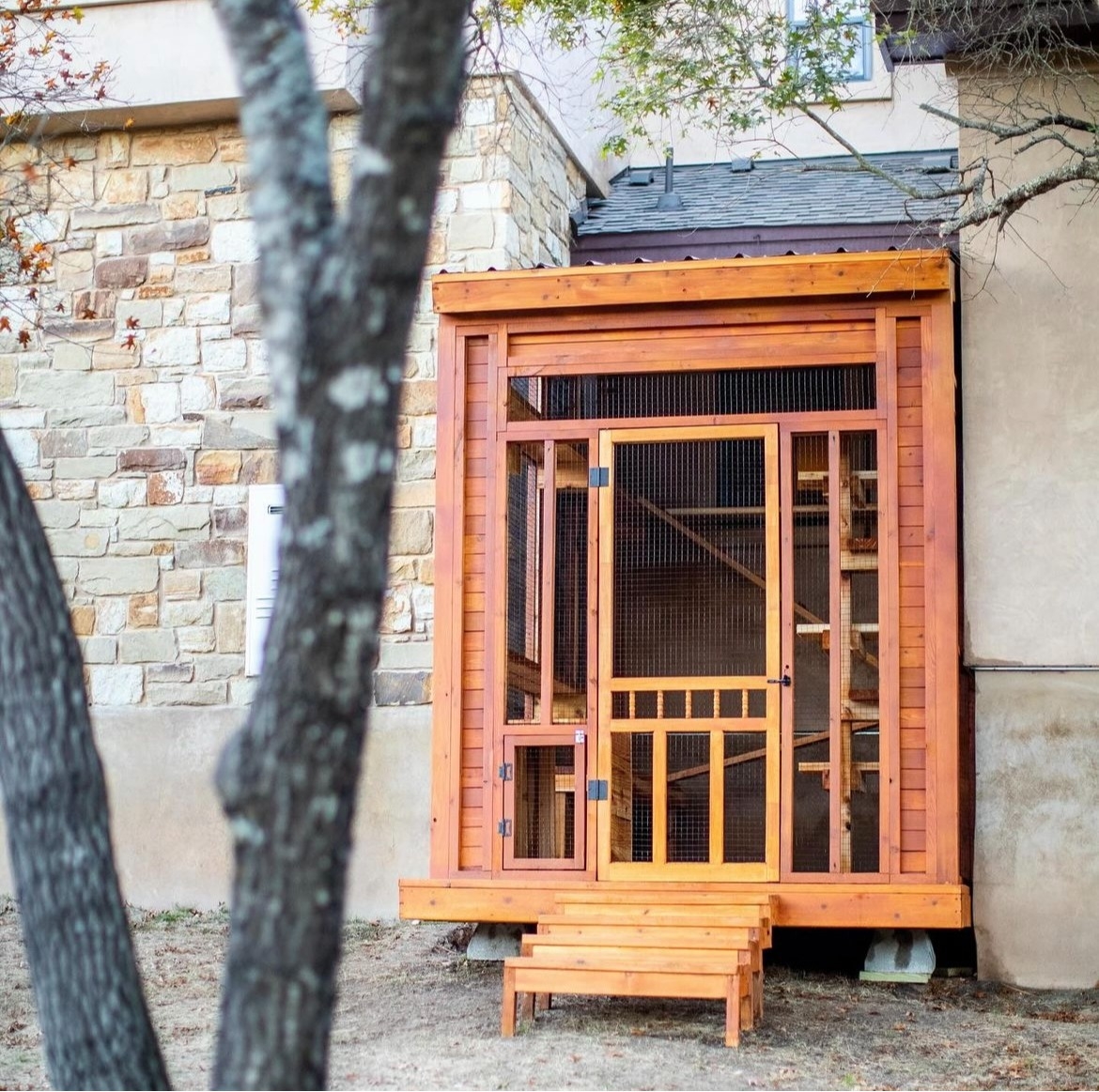A Beginner's Guide for Your First Catio
What is a catio, and how can it impact your cat's life?
A Beginner's Guide for Your First Catio
What is a Catio?
Essentially, a catio is exactly what it sounds like: a combination of "cat" and "patio." It's an enclosed outdoor space specifically designed to let cats safely enjoy the outdoors. These structures can be attached to a window, porch, or even stand alone, providing a secure environment where cats can experience fresh air and stimulation without the risks associated with free-roaming.
Why Build a Catio?
Health Benefits
Catios offer a safe outdoor environment where our feline friends can engage in physical exercise and mental stimulation. Exposure to natural sunlight helps regulate their circadian rhythms, ensuring better sleep patterns and overall mood enhancement. Fresh air can improve respiratory health, while exercise in an outdoor setting encourages natural behaviors such as hunting, climbing, and exploring.
Studies show that these activities are not only physically beneficial but also crucial for mental stimulation, reducing the risk of behavioral issues that can arise from indoor confinement. Allowing your cat to safely experience the outdoors through a catio can significantly enhance their quality of life.
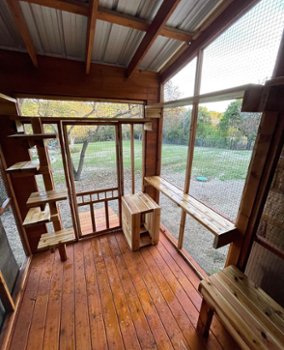
-
Physical Exercise: Catios encourage your cat to move, climb, and explore, promoting physical fitness.
-
Mental Stimulation: The sights, sounds, and smells of the outdoors provide mental enrichment.
-
Stress Reduction: Access to a catio can reduce anxiety and stress, leading to a happier cat.
Safety Benefits
Catios Offer cats the best of both worlds by providing a safe indoor/outdoor lifestyle, allowing cats to enjoy the outdoors without facing the risks that outdoor cats encounter. According to a study, indoor cats live an average of 10 to 15 years, whereas outdoor cats typically live only 2 to 5 years due to outside dangers.
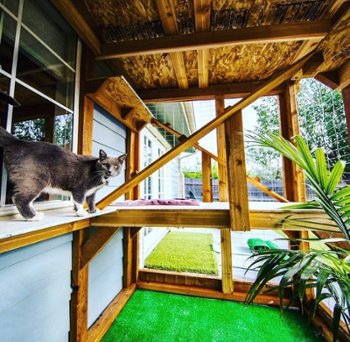
Designed with safety in mind, catios protect your cat from outdoor hazards such as predators, traffic accidents, and encounters with stray or feral cats. They also prevent escapes, ensuring your cat won't wander off or get lost. Additionally, catios help preserve local wildlife by keeping your cat contained, preventing them from hunting and disrupting the natural ecosystem.
-
Predator Protection: Catios provide a secure outdoor space, protecting your cat from predators, diseases, encounters with feral/stray cats, and traffic hazards.
- Preventing Escapes: A catio ensures your cat stays contained, preventing them from wandering off or getting lost.
- Environmental Protection: By keeping your cat contained, catios help protect local wildlife from being hunted.
Planning Your Catio
Assess Your Space
When assessing your space for a catio, select a window where you can easily install a cat flap, allowing your cat to enter and exit the catio at their convenience. Choose a location that offers a good view for your cat, letting them comfortably observe their surroundings. Additionally, consider areas that receive adequate sunlight and have a solid foundation for stability and safety.
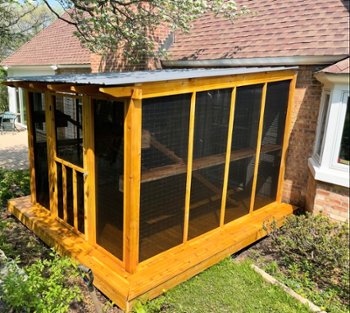
When considering the size of your catio, take into account the size of your cat and how much space they need to roam and play comfortably. We recommend providing at least 10 square feet of space per cat to ensure they have enough room, preventing the area from becoming crowded, especially if you have multiple cats. Consider your cat's activity level; if you own very active cats, you may need a larger catio to allow them ample space to run around and stay engaged. Providing sufficient space helps maintain a healthy and stimulating environment for your feline friends.
Materials and Construction
Choosing Durable Materials: When planning your catio, selecting the right materials is crucial to ensure longevity and safety. Opt for weather-resistant materials like treated wood, metal, or PVC to withstand various weather conditions and prevent deterioration. Additionally, use sturdy mesh or wire for the enclosure to keep your cat secure while allowing them to enjoy the fresh air and view.
Building a Sturdy Structure: Constructing a solid foundation and framework for your catio is essential for stability and safety. Ensure that the base is level and secure, and reinforce the structure with strong joints and supports. This will not only provide a safe environment for your cat but also ensure the catio withstands the test of time and elements.
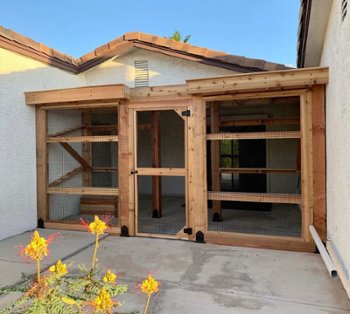
Safety Considerations: Pay close attention to the safety aspects of your catio design. Avoid using toxic materials and ensure there are no sharp edges or small gaps where your cat could get injured or escape. Incorporate safe entry and exit points that are easy for both you and your cat to use.
Building a catio is a fantastic way to provide your feline friend with a safe and enriching outdoor experience. By carefully planning the location, size, materials, and construction, you can create a secure and stimulating environment that benefits both your cat's health and the local wildlife. Start your catio project today and watch your cat thrive in their new outdoor haven!
----------------
References:
de Assis, L. S., & Mills, D. S. (2020b, December 9). Introducing a controlled outdoor environment impacts positively in cat welfare and owner concerns: The use of a new feline welfare assessment tool. Frontiers. https://www.frontiersin.org/journals/veterinary-science/articles/10.3389/fvets.2020.599284/full
Wood, T. J. (2023, May 2). Uncovering secrets to feline longevity. School of Veterinary Medicine. https://www.vetmed.ucdavis.edu/news/uncovering-secrets-feline-longevity
